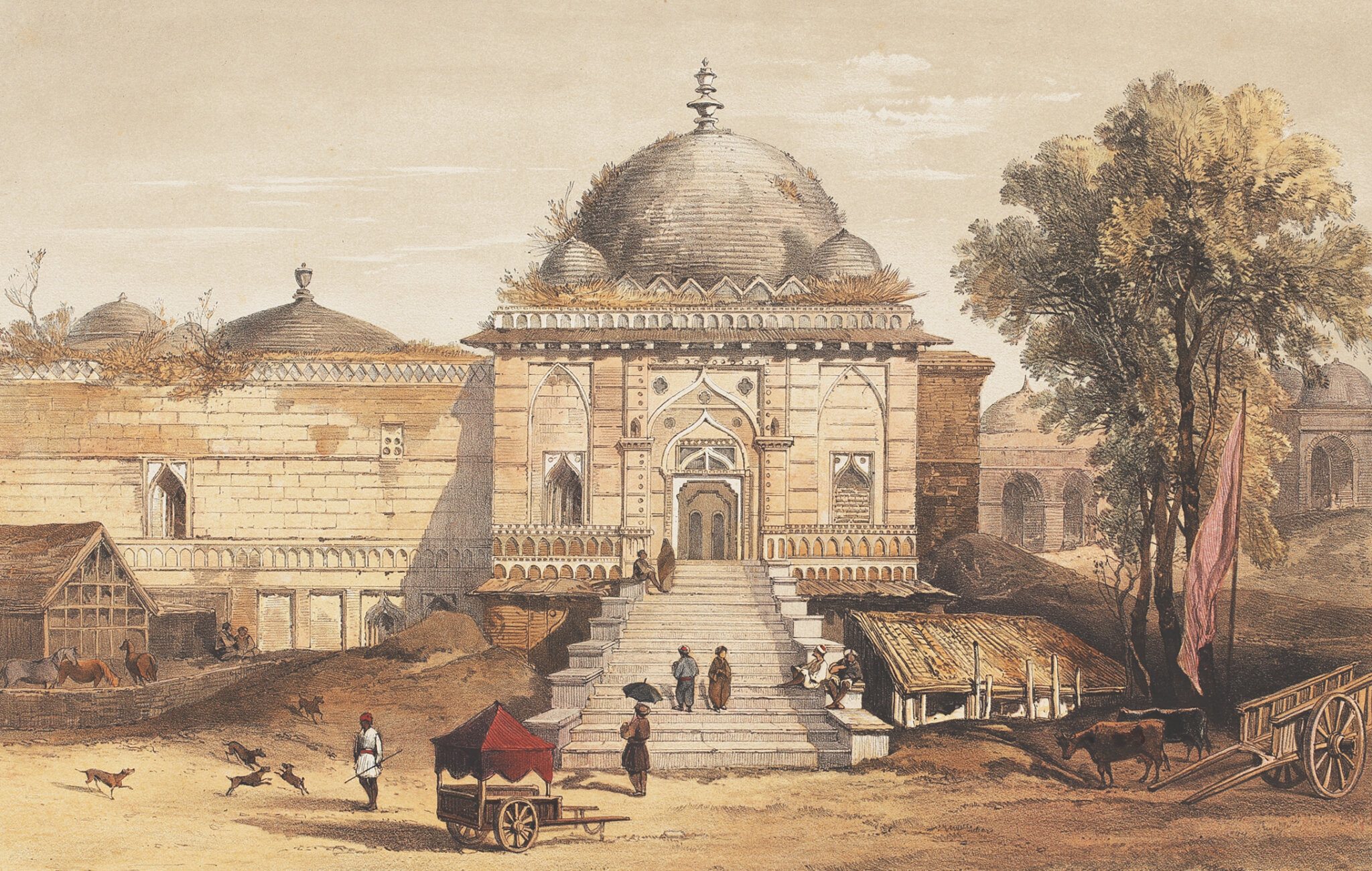
This engraving from the book The Ruins of Mandoo: The Ancient Mahommedan Capital of Malwah in Central India, 1859 illustrates features of Mandu in western Madhya Pradesh, an ancient city of historical and architectural significance.
The beautiful fortress town can be dated back to the 6th century, since when it has continually been the site of many conquests and civilisations, including those of the Paramara Dynasty, the Delhi Sultanate and the Mughals. These empires left behind examples of spectacular architecture such as Jami Mosque (Jumah Musjid), Jahaz Mahal, the palace of Baz Bahadur along with a pavilion he built for his beloved queen Roopmati, the tomb of Hoshang Shah and many more.
The Jami Masjid (Jumah Musjid) in Mandu is made with red sandstone, said to be modelled after the Great Mosque at Damascus. While the construction of the mosque began under Hoshang Shah Ghauri (reigned 1405-1435), it was completed in 1454 during the reign of Mahmud Shah Khilji I (reigned 1436-1469).
The engraving showcases the frontal view of the mosque, highlighting its domed entrance chamber to the prayer hall and the courtyard. The great courtyard is faced on all sides by colonnades not visible here, and the prayer hall has three domes slightly visible here from above the boundary walls. The rectangular entrance with its large domed porch is beautifully ornamented with carved screen patterns and a band of blue glazed tiles.
Title
Front View of the Ruined Mosque, the Jumah MusjidPeriod
1859Artist
Captain Claudius HarrisEngraver
J Guiaud based on sketches by Captain Claudius HarrisPublisher
Day and Son, LondonMedium
Coloured lithographDimensions
H: 27.5 x W: 37.5 cmAccession No.
2020.1.1 (5)Genre: Etchings & Engravings
